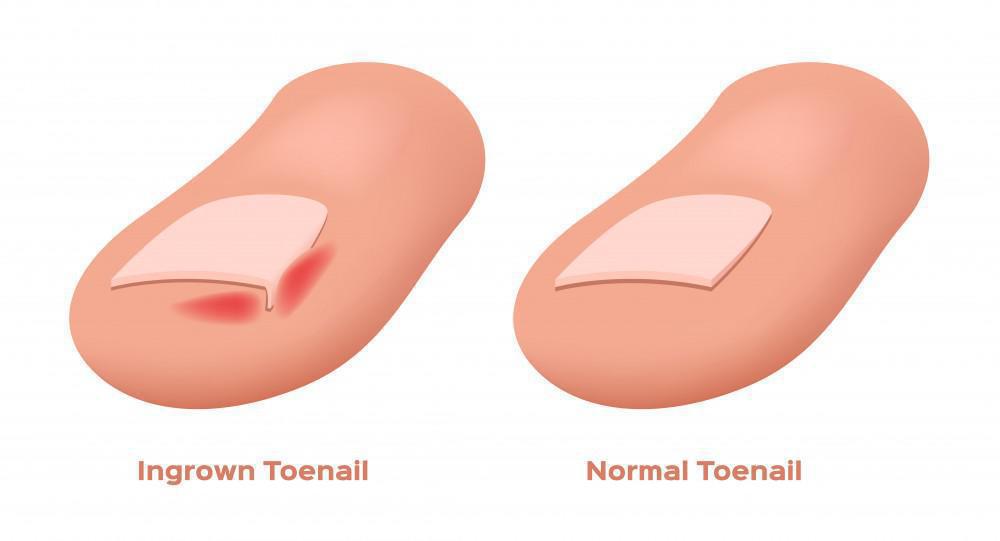Causes of ingrown toenails
Ingrown toenails generally affect the big toes, but they can occur on any toe. One or both sides of your nail might be affected. Ingrown toenails can occur for a number of reasons, but here are the most common ones:
- Clipping your toenails too short or in a round shape
- Wearing tight shoes or shoes that are too small
- Genetic propensity
When trimming your toenails, you should trim them straight across.
Telltale signs of ingrown toenails
Here are the most common signs of an ingrown toenail:
Pain and tenderness
The most common symptom of an ingrown toenail is pain in your toe. A minor ingrown nail might start with mild pain or tenderness when you touch it or wear tight-fitting shoes. If an infection develops, the pain may get more intense and affect your ability to walk or wear shoes comfortably.
Swelling
You may notice an area of swollen or hard skin next to your toenail if it’s ingrown. Pressing on the swollen spot may be painful. Sometimes, swelling and inflammation may make your toe warm to the touch.
Redness
Along with swelling, the skin around your ingrown nail might turn red. Redness can spread as the ingrown toenail worsens or if the area gets infected. If you notice red streaks leading from your toe, seek medical care, as this could indicate a more serious infection.
Pus
Infected ingrown toenails can develop fluid buildup or pus. Pus may drain or ooze from the area, and it’s often white or yellow in color. Some people notice bleeding around the nail, with or without oozing pus.
Nail discoloration
Sometimes, fungal infections develop with ingrown nails. Along with toe pain and inflammation, you might notice your toenail turning yellow, developing white patches, or getting flaky if you have a fungal infection.
When to seek medical help for ingrown toenails
Minor ingrown nails can improve with at-home care. Try soaking your foot in warm water with Epsom salt a few times a day, being sure to dry your foot thoroughly between soaks. Wear comfortable shoes with large toe boxes to avoid placing extra pressure on your toe.
If you’re concerned about your ingrown nail, you notice signs of infection, or if you have diabetes, schedule a podiatrist appointment right away.
Dr. Glover may place a small splint under your nail to lift it and give the skin time to heal. He can also prescribe antibiotic medication if there’s an infection. In more severe cases, he might recommend surgically removing part or all of your toenail.
Don’t ignore the signs of an ingrown toenail. Get expert treatment by booking an appointment online or over the phone with Mountain View Foot & Ankle Institute today.

